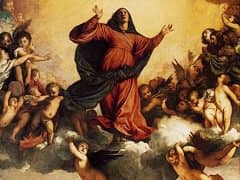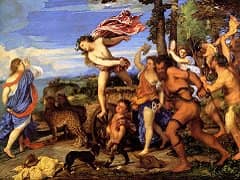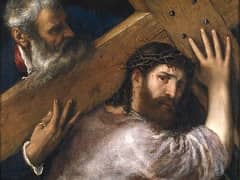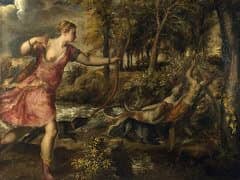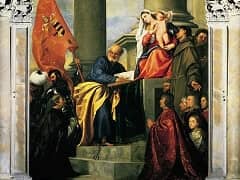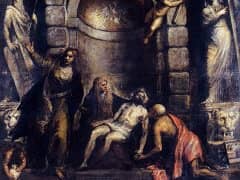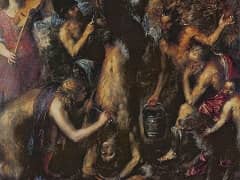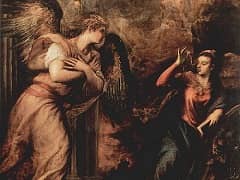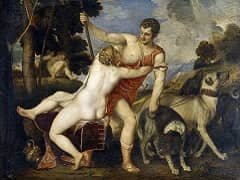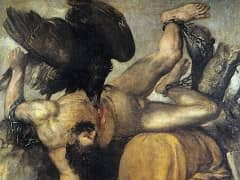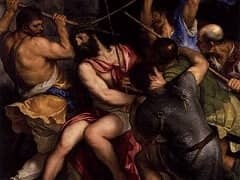Perseus and Andromeda by Titian
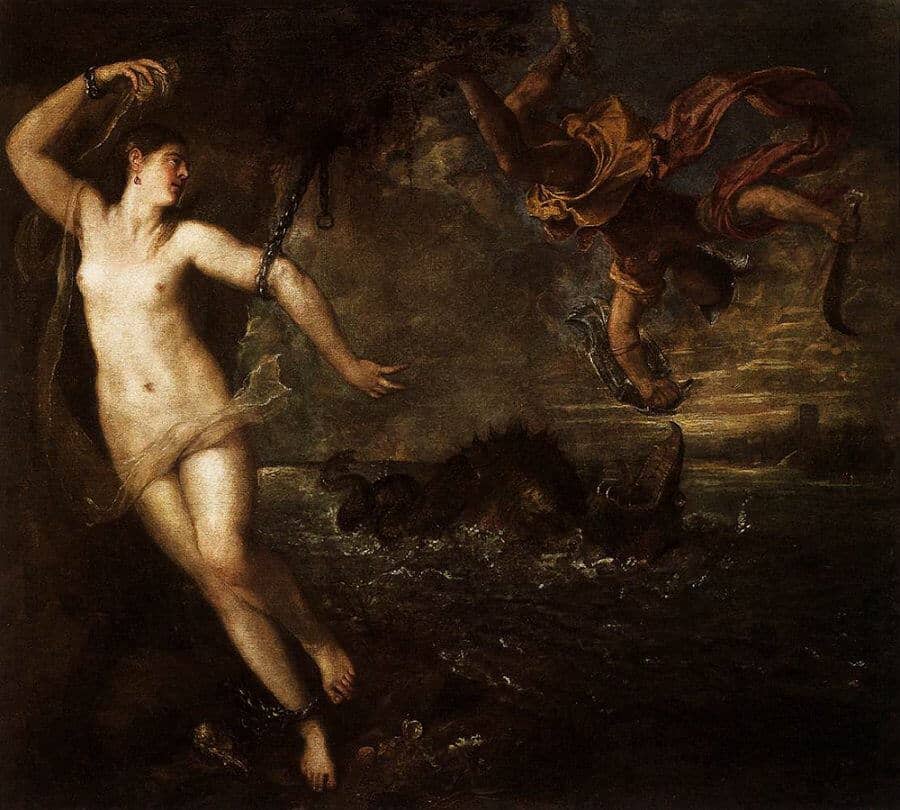
Perseus and Andromeda is the most significant work by Titian in the Wallace Collection. It was part of his most important commission of the 1550s and 1560s: a series of erotic mythological subjects painted c.1550-c.1562 for King Philip II of Spain, known as the poesie. All six paintings depict episodes taken from Ovid's Metamorphoses: Venus and Adonis and Danae with Nursemaid , Diana and Actaeon and Diana and Callisto and the companion piece to Perseus and Andromeda, The Rape of Europa. Perseus and Andromeda was probably painted in 1554-6 and may have been sent to Philip in 1556.
Andromeda is shown chained to a rock; a sacrifice to appease the sea monster, sent by Neptune to punish her mother's boast that she and her daughter were more beautiful than the Nereids. The hero Perseus swoops down to rescue her, his powerful vertiginous descent contrasting vividly with her vulnerable, helpless pose. Titian gives extra poetic resonance to the terrifying scene by including pieces of coral at Andromeda's feet. These refer to another danger overcome by Perseus: the slaying of the Gorgon Medusa, whose snaky locks petrified into coral on her death. Titian heightens the mood of sexual tension by relegating Andromeda's parents to the background,concentrating our attention on her naked captive body. X-rays of the painting reveal a tortuous creative process, the artist changing his mind about the composition at several stages: the figure of Andromeda, for example, was originally placed on the right. If you look closely, you can see some of these changes with the naked eye.

